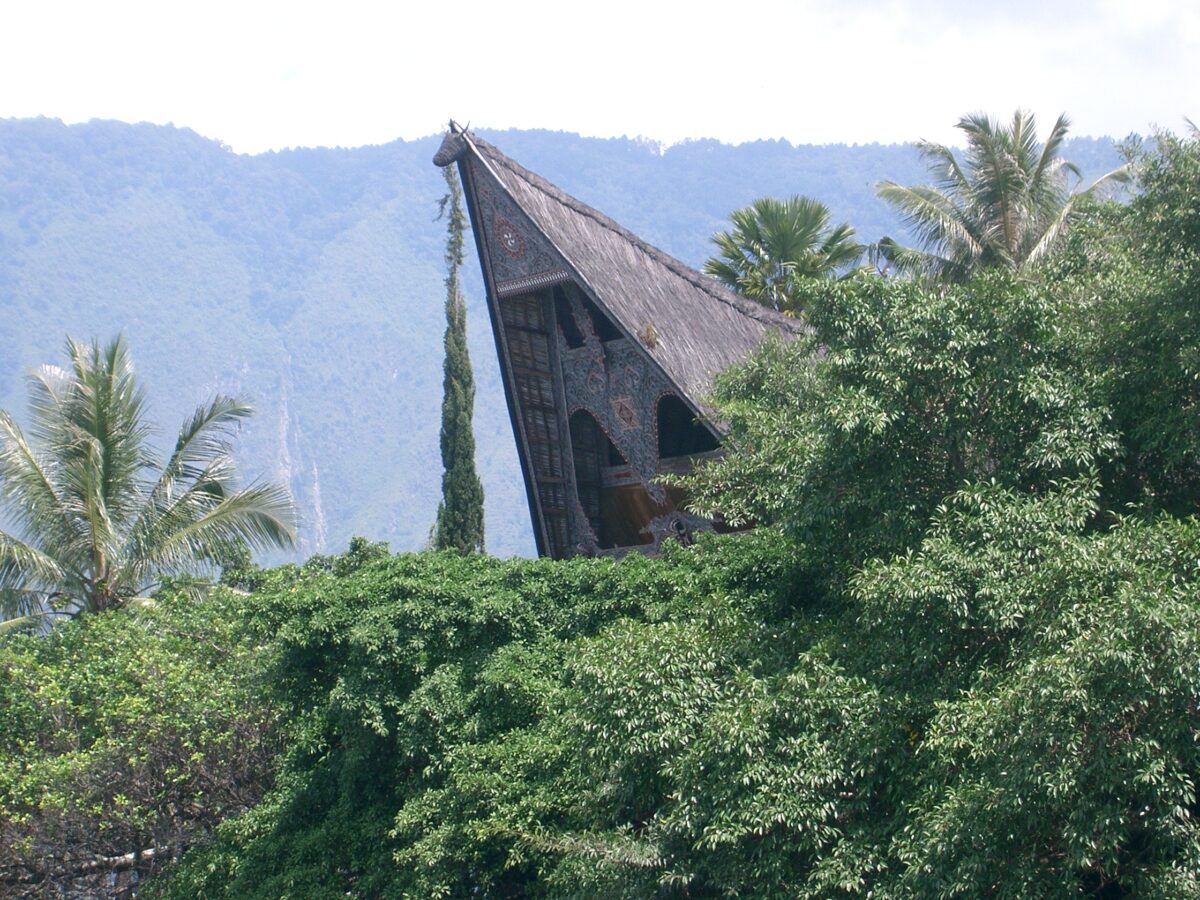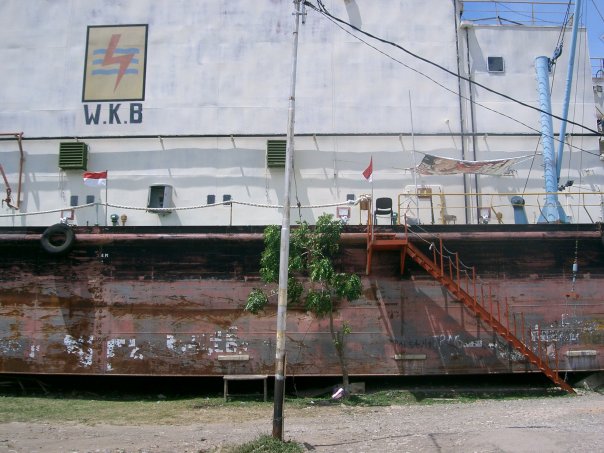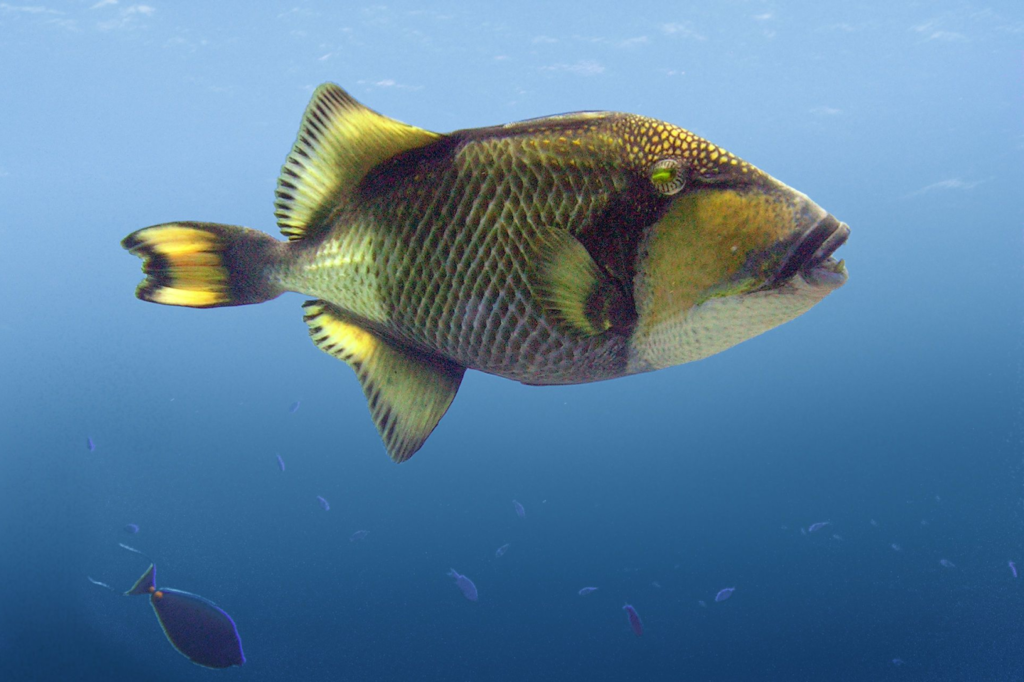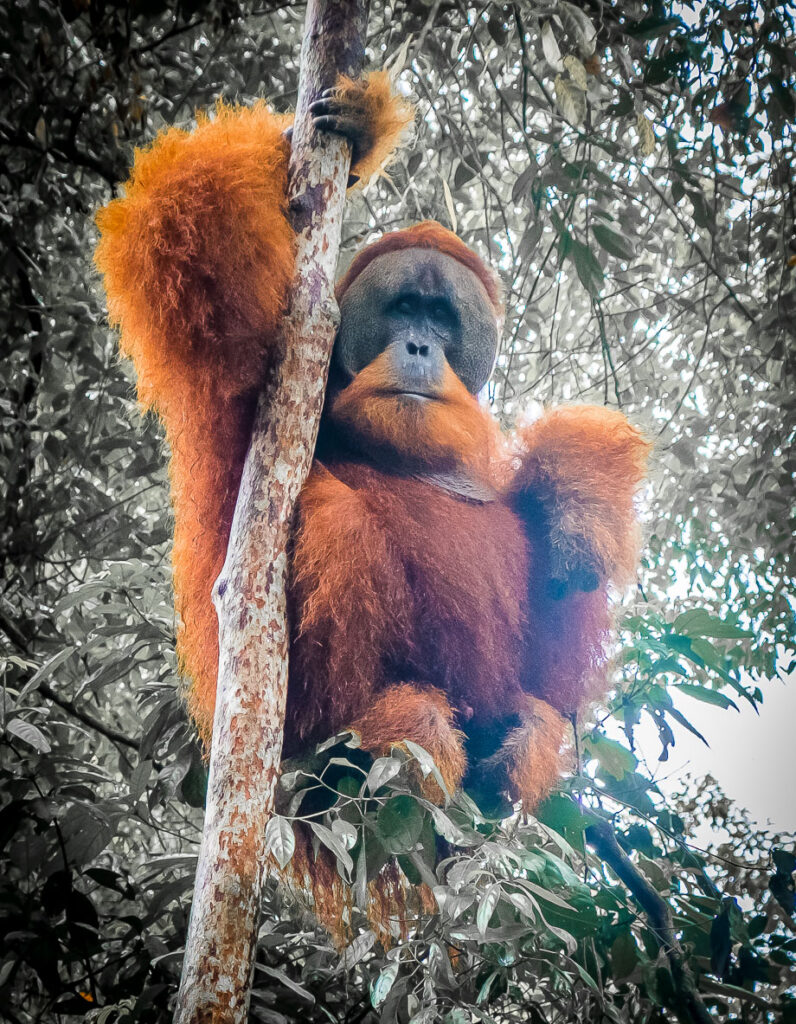Sumatra is an island in Indonesia and the 6th largest in the world.
This story is in 2 parts: the first about my first trip to Sumatra in 2007 when I climbed a volcano, took magic mushrooms by the largest lake in south east Asia, saw first hand the devastation of the 2005 tsunami and was attacked by a killer fish while scuba diving on a remote island; the second about my return to Sumatra in 2019 to trek the incredible and unique orangutans.
Sumatra is a massive island and is a bit off the beaten track, so does not get many tourists. Most visitors stick to the northern part of the island, where most of the attractions are.
Medan
Medan is the capital of Sumatra with a population of 1.5 million. It is the business and transport hub of the island. Flights from Singapore are quite cheap. There are no tourist attractions, but I enjoyed just hanging out in the city. You can experience real Indonesian daily life, a world away from the insulated tourist bubble of Bali.
Note that Indonesia suffers quite a bit from political instability and protests and riots can break out spontaneously. Hostilities are not directed towards foreigners, but it is still a good idea to avoid public gatherings.
Lake Toba – Sumatra’s chill capital
Lake Toba was formed by an meteor crashing into the island some 75000 years ago. It is the largest fresh water lake in south east Asia. There is a large island in the middle of the lake, called Samosir. Most accommodation and tourist facilities are on the island.
Lake Toba is the perfect place to chill. The local people are Christians and seem to spend a great deal of time playing guitar, drinking and smoking weed. Magic mushrooms are also available.
A friend of mine went there a few years earlier and reported full moon parties. Lake Toba apparently used to be on the south east Asian party circuit. When I was there, however, the place was pretty dead and the locals were suffering. I met one dude there who had been going there for years and his theory was that the cause was the Indonesian government, who had restricted the tourist visa to from 6 to 2 months. That meant that tourists had less time to visit out of the way locations and instead concentrated on more popular destinations like Bali and Java.
I stayed at the Carolina Cottage, which has the best swimming spot and for many years was featured on the front cover of the Lonely Planet guide book. I had my own bungalow with traditional wood carvings of the local Batak people and paid only 3 € per night! It has since been completely renovated.
Berastagi – base for volcano trekking
North of Lake Toba, there are a bunch of active volcanoes you can climb. You can base yourself in nearby Berastagi.
Well, I say climb, but there is an easy road going up up Mount Singabung and you can easily get up and down in a day. Mount Sibayak is another nearby volcano.
Banda Aceh and the devastion of the 2004 tsunami
I flew from Medan to Banda Aceh. I wanted to go directly to Pulau Weh for scuba diving. Pulau Weh had been recommended to me by my dive master on Zanzibar in Tanzania.
Banda Aceh is the capital of Aceh province. For years, there was an insurgency in the area and it was off limits to tourism. Locals were fighting for autonomy and control of their natural resources which were being exploited by the central Javanese government.
The devastating tsunami opened the door for peace negotiations, opening up the region to tourism for the first time. I had seen first hand the devastation wrought by the tsunami in Sri Lanka in January of 2005, but was completely unprepared for the shock in store.
I got a taxi from the airport and asked the driver to take me straight to the port to get the ferry to Pulau Weh. On our way into the city, we drove past a big football field. He told me that was a mass grave. Over half the population of 500000 people were killed in the tsunami.
As we came into the city, I could see the devastation. Large sections of the city were completely gone and were in the process of being rebuilt by NGOs/the UN. My taxi driver didn’t speak much english and suddenly started saying: “You see ltd!”. I was like, what the freaking hell is Ltd?! Just take me to the port! Suddenly, he verged off the main road and we raced down this really dodgy part of town. I started to freak out thinking for sure he was taking me to his mates’ to rob me.
Then, in the distance, I saw this massive ship. Some kind of tanker. I was confused and disorientated. I asked the driver, “is this the port?”, to which he replied, “port 5 kilometer” and gestured in the opposite direction. As we neared this huge ship, I noticed it was on the land. We stopped and my driver said, “take photo, take photo.” I thought, why the hell would I want to take a photo of this ship?? I got out of the taxi to take a photo and another taxi pulled up and a Japanese guy got out and started taking photos. I noticed there was some writing on the side of the ship: blah blad shipping company LTD. The locals had shortened the name to “LTD”! Then the penny dropped. This ship had been picked up by the tsunami and dumped 5km inland!
Pulau Weh – attacked by a killer fish!
Pulau Weh is a tiny island off the north coast of Sumatra. When I was there, there were only a few bungalows on stilts overlooking the ocean and a handfull of restaurants. I went there specifically to scuba dive. There were 2 dive shops on the island. Weed was available there, but you had to be careful due to the occasion army patrol.
I did my PADI Advanced Open Water certification there. One of the optional dives is a fish identification dive. On that dive, I was at the back of the group and I saw this big really huge fish just sitting there looking in the opposite direction. I swam up behind it expecting it to swim away when I tried to touch it (number one rule of diving – remember to breathe; number two rule – don’t touch anything). Instead it stood its ground and I touched its rear fin. It spun suddenly around and darted at me, forcing me to take defensive action. It attempted to bite me with its huge fangs, but luckily I managed to protect myself with my fins. It all happened in an instant. I was a bit shaken, but managed to continue the dive unharmed.
Later after the dive was over, my dive instructor was taking me through the fish book, to identify which fish we saw that day. She turned the page and said, “Be very careful of this fish, its very aggressive, especially at this time of year – breeding season.” These fish are very territorial and are known to chase divers away from their nest to protect their baby eggs. I decided it was not wise to mention the incident earlier during the dive. But I did tell the story later that night at dinner with my diving buddies. As soon as I said I was attacked by an aggressive fish, they all said: “Titan Trigger fish, right?” They then told me stories of a diver who had a big chunk of his buttock bitten off by a Titan Trigger fish. Another had part of his skull removed. To say that I had a lucky escape was an understatement!
Bukit Lawang – close up encounter with an aggressive Orangutan!
Bukit Lawang is a small village in the Gunung Leuser national park. The park is one of only 2 places in the world where you can see Orangutans in the wild (the other being Borneo). The park is also home to the endangered Sumatran tiger and rhinoceros. These species are being threatened by continuous illegal logging and clearing of the jungle to make way for palm tree plantations for the production of palm oil. Palm oil is used in the manufacturing and beauty product industries.
The village is in the jungle located on the banks of a picturesque river. I stupidly decided to skip it on my first trip, as the original road was in such bad condition and I had limited time. This was one of my biggest travel regrets and made a point of returning to Sumatra especially to see the Orangutans.
You can trek the orangutans by hiring a local guide. Treks last 1-3 days and you can camp by the river in the jungle. I hate camping and opted to just take the one day tour. Others in my group, however, planned to camp overnight.
As we embarked on the trek, one of my tour party asked the guide what the chances were to spot the elusive creatures. He replied that it would take all his years of experience and expert skill to find the orangutans, but he could not guarantee a sighting. So, we walked about 30 minutes to a picnic spot and found all the orangutans there in the trees with all the groups taking photos! There used to be an orangutan rehabilitation center in Bukit Lawang, but it had been closed down. The orangutans had been released into the wild, but were too used to human contact and were not fully rehabilitated. So they simply were hanging around on the peripheries of the jungle waiting for their daily feed of bananas.
Our group then split off and walked deeper into the jungle and we found another group. This was a more authentic experience. The oranguntans seemed to be curious and intelligent creatures. They wanted to learn about us, but at the same time keeping their distance.
Finally it was time to go back. I broke off from the rest of the group who made their way to the camp site. One of the guides took me back to the village. As we were walking along the trail, we came round a corner and suddenly there was a an orangutan standing there right in front of me! I quickly rushed to get my camera out of my bag, but before I could, my guide grabbed me by the arm and pulled me away. He told me it was an aggressive male, known for grabbing tourists by the arm in order to get fed bananas by the rangers. You can find many videos online of these attacks. The orangutans refuse to let go and there is nothing you can do because of their immense physical strength and vice-like grip.



